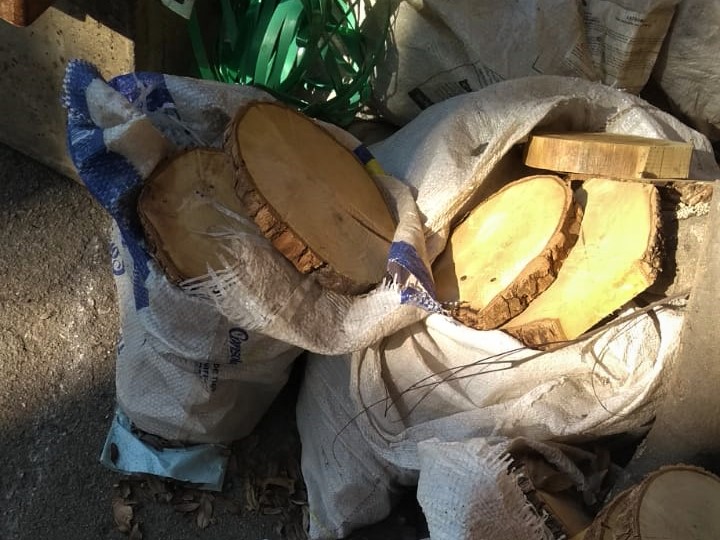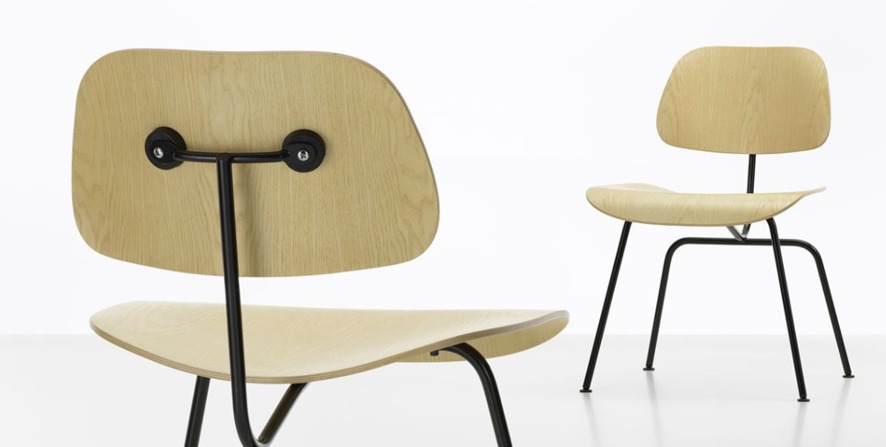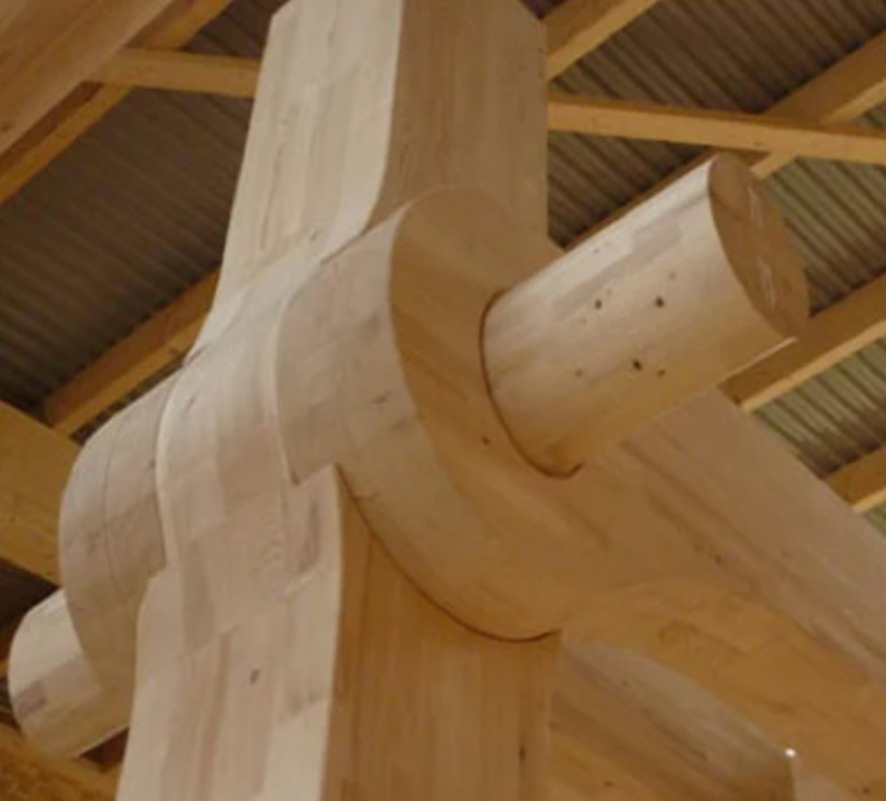From material to product:
Secondary processing
Atelier Pedro Petry. Learn more about this space here.
The second stage that occurs after the wood is cut is called secondary processing. We can have two types of this treatment after unfolding:
- Traditional, it usually occurs on a small scale in communities where the culture already has a deep knowledge of the vegetation forged by tradition and customs. Indigenous people, quilombolas and fishermen usually produce artifacts, buildings, medicines and clothing using products from native forests.
- Industrial, when traditional methods and processes are studied and expanded to increase productivity and/or sustainability. In general, a production chain is formed with the use of technologies and machinery previously adapted to the forest and topography of the region, being able to use as a resource the characteristics of the soil, rivers and the forest itself, whether native or urban.
In both stages of wood processing, the equipment has evolved a lot in recent years. In the case of secondary processing, these changes have impacted both approaches. Sophisticated, highly efficient and computerized machines allow the mass manufacture of wood products. On the other hand, massive customization and on-demand customization has also become widespread, where consumers can customize their product by choosing some variables. The size of the equipment has also been reduced, making it more accessible and easier to handle for a greater number of woodworkers and artisans.
With the growth of the industrial park, sawn wood is the main raw material for the production of components for civil construction, in the production of furniture, utensils and small objects. different sets of operations. They are: transformation, machining, finishing and assembly. However, only operations related to the first stage will be listed below, highlighting the commercial treatments of wood and production models applicable to those arising from the management of urban afforestation.
Commercial wood treatments

laminated wood
It undergoes a process of longitudinal and circular cutting to produce very thin sheets that can be used as a surface coating or glued on top of each other and treated, forming wooden plywood boards, cut into standardized sizes, and which are widely used in construction. civil, naval and furniture.

bent wood
It undergoes the action of steam, traction or gluing to produce curved parts, used in shipbuilding and in the construction of sheds and hangars. First, the thin beech logs (round wood) are soaked in water for months and, after being treated, their (short) fibers become malleable and lose their sap (making the wood resistant to pests). Thus, they are ready to be bent by steam using curved metallic jigs, which pull the pieces until drying.

pressed wood
It takes advantage of the malleable characteristics of laminates or plywood in large presses, with heating. The plywood veneers are fixed to structures composed of small pieces of sawn wood, making it possible to fill doors, seats and chair backs, pieces with double curvature and small wooden objects (POMs) such as combs, clips, trays, fruit bowls and pots.

Turned Wood
It undergoes the preliminary roughing process for its use in appropriate lathes where, still in the form of a solid block, it rotates and is formed by gouges and chisels, which give the concavity for large or small parts, according to their use in the construction, furniture or household items. It is common to use, in this type of process, roots and non-commercial parts of the trunk of trees – because they have knots, which are considered defects in the processes of sawn wood. In turning, these defects are taken advantage of, aesthetically exploring their unique characteristics, with special effects, in order to give an aspect of exclusivity to the final product.

Engineered Wood
It is a technology aimed at the civil construction sector that aims at innovation, prefabrication for the sustainable use of wood. In this technological route, wood can go through a variety of industrial processes, resulting in different types of engineered wood. The best known for Civil Construction are cross laminated wood (or CLT – Cross Laminated Timber in English) and glued laminated wood (or MLC – Glue Laminated Timber or Glulam in English). The use of these processes, associated with the sustainable management or reforestation of our forests, allows the total replacement of the use of steel in civil construction, even in buildings with few floors.
Main types of secondary processes
Rustic style
The artisans of joinery and traditional carpentry began to reuse the wood used in floors, doors, sleepers, wooden sleepers and posts, boxes and pallets – the so-called demolition wood, or “storywood”. The reuse of wood has been gaining ground in the market because it is considered a sustainable proposal, and due to the current difficulty of finding some very resistant woods on the market such as aroeira, imbuia, peroba rosa, because their handling and cutting is prohibited by environmental agencies. , due to the risk of extinction.

Traditional woodworking
Traditional craftsmen, cabinetmakers and carpenters use heavy machines aimed at processing solid wood. One of the most striking aspects of the parts they produce are the systems for joining components through wedges and fittings, using the wood itself – these systems have been used since the colonial period, when machines were driven by belts on large pulleys driven by to the waterfall, later being replaced by steam and, recently, by alternating current electric motors. However, with the difficulty of finding legal wood (with a green seal), a good part of the traditional joinery redirected its production. He started to work with agglomerates and laminates, and to use lighter machines, producing straight furniture for kitchens and built-in cupboards. The old fittings and wedges were replaced by hardware that facilitate the assembly and structuring of tables, shelves and drawers. The solid wood product made with solid wood has become an even more rare and luxury item, where many designers work in small studios. In this way, the use of pruning and suppression wood by these professionals, even though it requires a stage of experimentation and learning about the potential and limitations of each species, can represent an important opportunity to revitalize their activity, with a low-cost material. and environmentally sound origin
Digital Manufacturing
Post-war manufacturing developed mainly in aviation, with the optimization of parts and components that needed serialization, lightness and precision. Projects developed in association with tests in wind tunnels and automated numerical machines, started a process called Computer Aided Design (CAD). This process was soon integrated into computerized production systems (CAM), with the support of Numerical Command Control (CNC) machines, which quickly evolved into machining centers, with tool changes and several operating axes, which allowed machining parts complex. The advance in the development of CAD-CAM systems also led to parametric design with algorithms and rapid prototyping, greatly expanding the possibilities of combining materials (composites of polymeric resins and fibers) and fields of application.
Este maquinário e sistemas de projeto-produção têm tido seu uso difundido para além das fronteiras das empresas, por meio dos chamados Fab-labs – pequenas oficinas que oferecem fabricação digital, funcionando como espaços de aprendizagem e experimentação, em geral abertos à comunidade em geral. Em tais ambientes também a madeira de poda pode ser utilizada como matéria-prima, gerando novos nichos de aplicação para o material, ao mesmo tempo em que capacita novos públicos a lidar com ele no contexto das tecnologias digitais.


